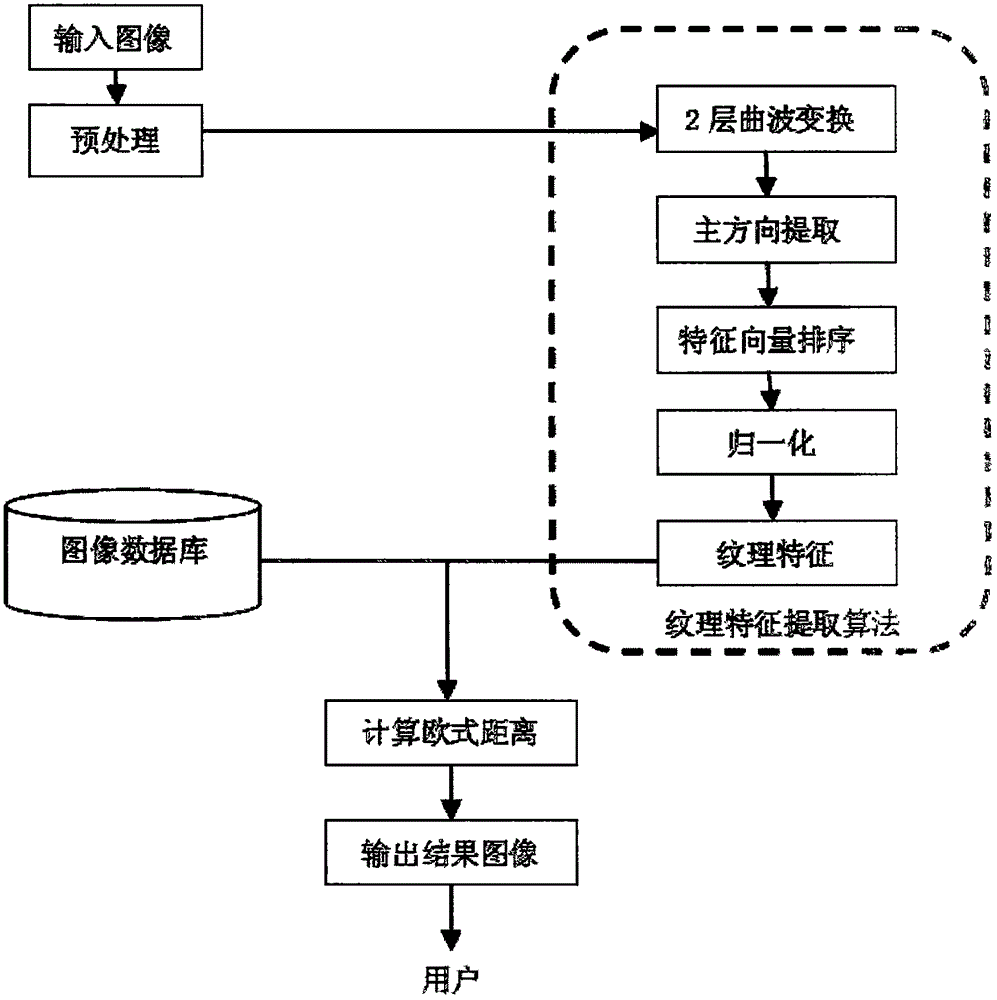Algorithm for extracting texture features of curvelet transformation based on energy distribution
A curvelet transform and energy distribution technology, applied in the field of curvelet transform texture feature extraction algorithm, can solve the problems of low retrieval accuracy, few analytical directions, translation sensitivity, etc., to overcome rotation invariance, complex texture resolution is good Effect
- Summary
- Abstract
- Description
- Claims
- Application Information
AI Technical Summary
Problems solved by technology
Method used
Image
Examples
Embodiment Construction
[0016] In order to make the technical means, creative features, goals and effects achieved by the present invention easy to understand, the present invention will be further described below in conjunction with specific embodiments.
[0017] refer to figure 1 , the specific implementation method adopts the following technical solutions: a curvelet transform texture feature extraction algorithm based on energy distribution, including a 2-layer curvelet transform module for obtaining energy distribution data, and a main direction extraction module for determining the reference subband And the circular translation module that is used for eigenvector sorting; Described 2 layers of curvelet transform modules calculate the mean value and the variance of 13 subbands respectively, press the order of one layer of high frequency subbands, two layers of high frequency subbands, low frequency approximate subbands Arranged into a 52-dimensional original feature vector, the 2-layer curvelet ...
PUM
 Login to View More
Login to View More Abstract
Description
Claims
Application Information
 Login to View More
Login to View More - R&D
- Intellectual Property
- Life Sciences
- Materials
- Tech Scout
- Unparalleled Data Quality
- Higher Quality Content
- 60% Fewer Hallucinations
Browse by: Latest US Patents, China's latest patents, Technical Efficacy Thesaurus, Application Domain, Technology Topic, Popular Technical Reports.
© 2025 PatSnap. All rights reserved.Legal|Privacy policy|Modern Slavery Act Transparency Statement|Sitemap|About US| Contact US: help@patsnap.com

